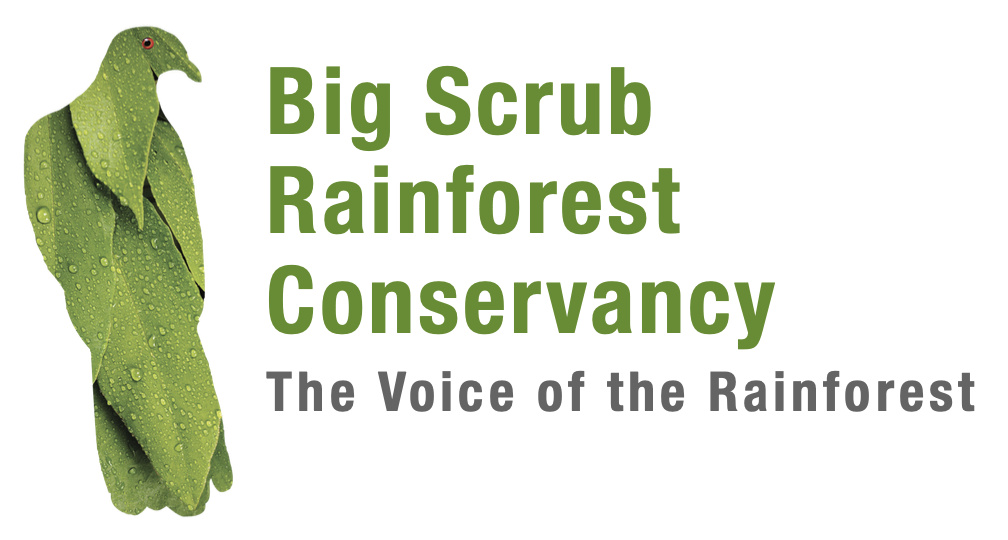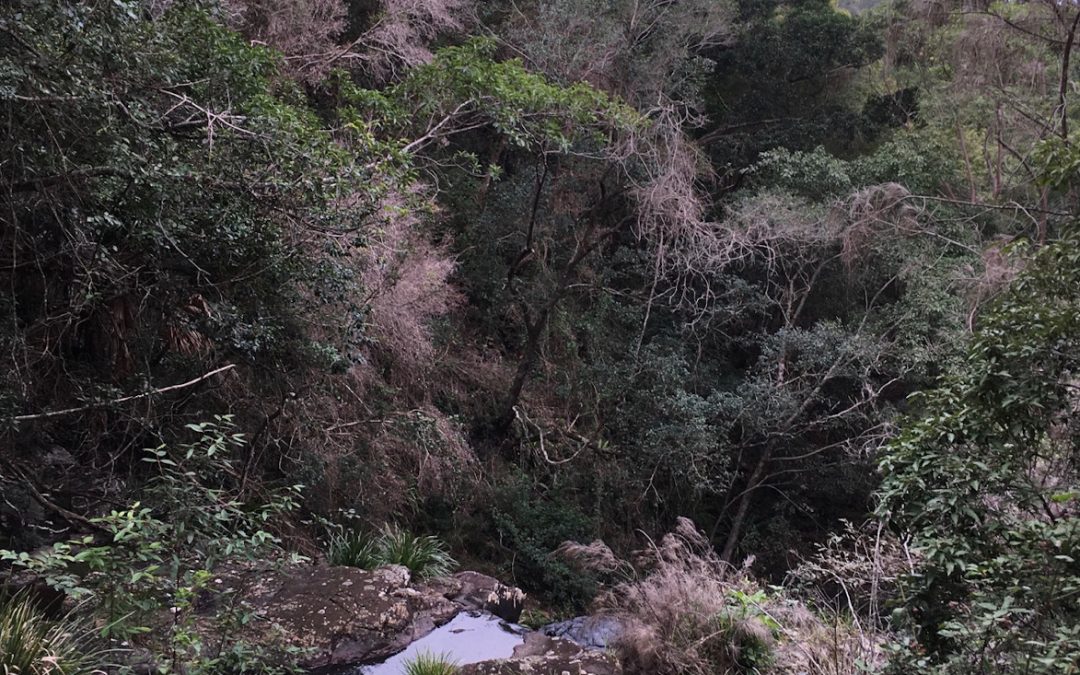Written by Stephanie Lymburner.
Having been associated with this property since 1968 and dwelt here for the past twenty-six years we have observed many changes, including, cyclonic rain events, strong destructive winds, the positive effect of weed control, unsympathetic neighbours, Highway upgrades, and most recently the nearby threatening fires.
Nothing had prepared us for a severe drought. Yes, there had been long dry spells before, plants had been stressed, but the waterfalls always had a small trickle of water. When rain finally arrived, plants responded quickly – budding up, green shoots appearing, flowering; animals returning to our forest and the wonderful sound of rain coursing into water tanks.
This time was different. The dryness extreme, longer and hotter. The waterfalls dried up completely. Regular waterholes empty hollows. Plants wilted then shrivelled, browning off, with some appearing to die.
Near the house a large area of Maiden Hair Fern (Adiantum sp.) usually a source of pleasure, became a blackened area devoid of even the smallest green frond.
Distressing to walk past daily.
Some Bangalow Palms (Archontophoenix cunninghamiana), lovingly propagated, planted and nurtured, tall slender trees just starting to flower, with their fronds drooping, and trunks drying out. Clumps of Native Ginger (Alpinia caerulea) drooping, then losing leaves. The native grasses (Oplisminus sp.) and various Fern species diminishing in health and apparently dying. In the forested areas several lilly pillies (Syzygium sp.) and Brush Box (Lophostomon confertus) dropping copious dry leaves forming thick crackling groundcover.
A large tall Cabbage Tree Palm (Livistona australis ) situated at the top of the second waterfall gradually dying. Brown Myrtle (Choricarpa leptopetala), usually an extremely tough tree, their leaves curling, drying out leaving just the bare skeletons standing. Even the hardy Sand Paper Fig ( Ficus fraseri) losing all its leaves. Several species of Cordylines too showing significant signs of distress. A three-metre-tall Tree fern (Cyathea cooperi) at the foot of the second waterfall suddenly dying.
From our dining table looking toward the forest, usually thick dense impenetrable tangle of leaves and branches with only small patches of light, open now with bare branches, withered leaves and a clear view to the North.
Birds and animals like wallabies and possums usually so abundant now scarce, with little to feed on and no water readily available.
As the weeks turned into months the whole property appeared degraded, not the vibrant living entity we had achieved by removing weed species and restoring the habitat.
Now seemingly dying before our eyes, with nothing we could do to assist. All the leaf litter and dead standing and fallen trees presenting a significant fire risk.
Very depressing and disheartening.
*******
Finally, in February the rain came. The waterfalls flow again, tanks fill, grasses send out little welcoming shoots, trees start to bud up tiny tips of green showing at their branch extremities. To our surprise and delight the Maiden Hair Fern sprouts little tiny green fronds forming a carpet filling the garden. There are still some areas within the forest that haven’t recovered yet with dead trees and bare vines covering some areas that were once dense, difficult areas to access. While we did lose some species, though most of the recently bare limbs in the forest are leafing up, the wallabies and birds have returned, though in diminished numbers. Large trees that had been bare dry branches a short time ago now have abundant growth and are flourishing again.
We’re hopeful that with the coming Spring and Summer we will see the return of species and a healthier forest throughout the region highlighting extraordinary strength and resilience of the local rainforest species.
Thank you to Stephanie Lymburner for contributing this story.


